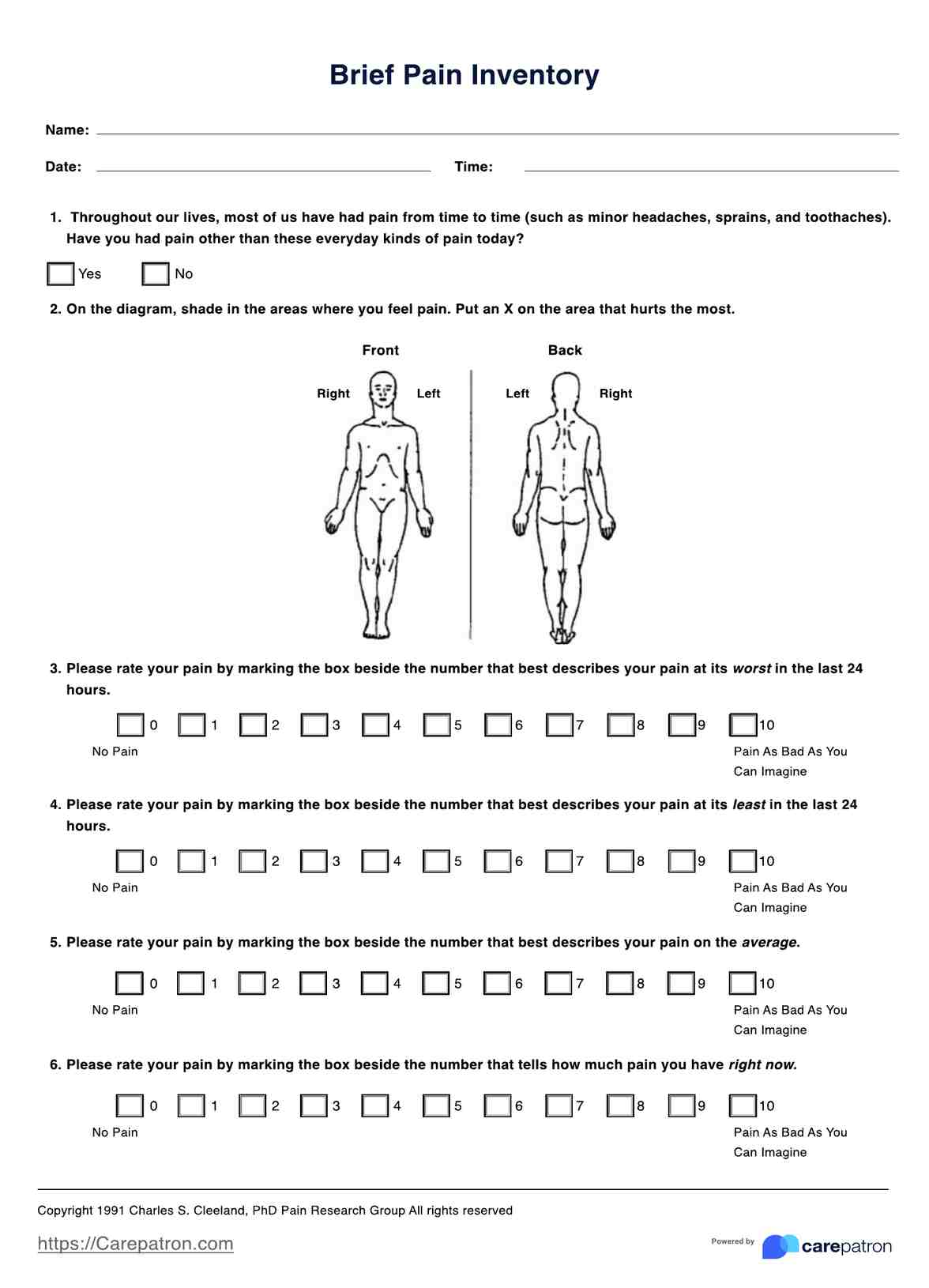The Short Form is a more condensed version of the Long Form and is used to quickly assess pain levels and the impact of pain on daily activities, while the Long Form provides a more detailed analysis of pain experiences.

Brief Pain Inventory
Discover the Brief Pain Inventory (BPI), a powerful tool for measuring pain intensity and its impact. Learn how it works and its benefits.
Use Template
Brief Pain Inventory Template
Commonly asked questions
Yes, the Brief Pain Inventory can be used for all types of pain, including acute and chronic pain, and can help healthcare practitioners better understand and manage their patients' pain.
The frequency of administration of the Brief Pain Inventory depends on the patient's needs and circumstances. Depending on the patient's pain management plan, it can be administered as frequently as daily or weekly or as infrequently as every few months.
EHR and practice management software
Get started for free
*No credit card required
Free
$0/usd
Unlimited clients
Telehealth
1GB of storage
Client portal text
Automated billing and online payments











